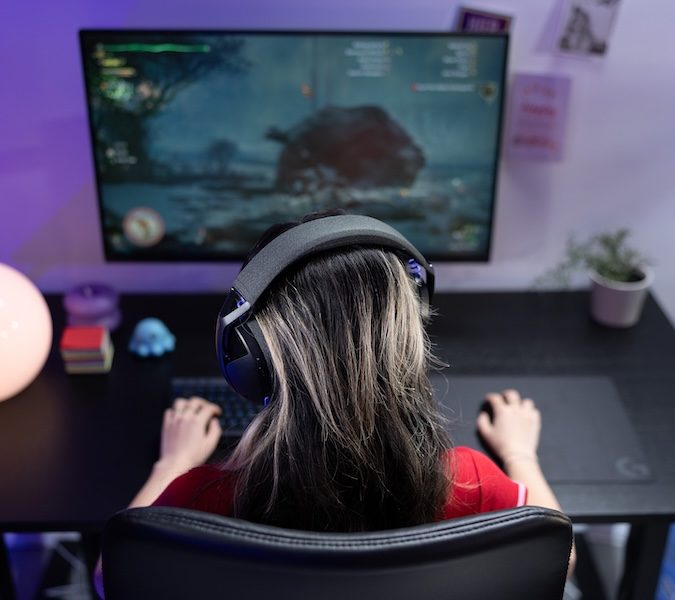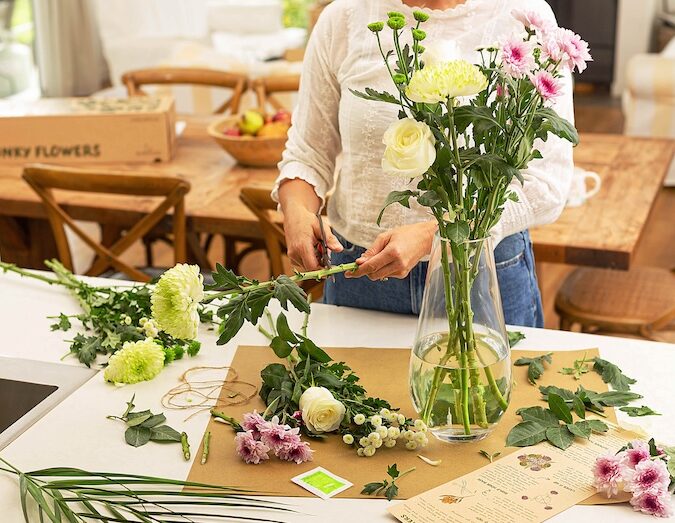#GirlsBehindTheGames: Dunedin-based Runaway helps games industry level-up for equality

It was a few years ago when Gamergate exploded into popular public consciousness in a torrent of entitled, white cis-male toxic masculine sludge. Since then, it has left a nasty stain that has continued to give the games industry an unappealing stench in the minds of some – and even that unappealing perception pales in comparison to the women whose lives and careers were ruined by the disturbingly angry trolls (who cannot be described in terms fit for a family publication).
But things are changing, slowly. And the folks at Runaway – a Dunedin-based, woman-led games studio – are helping, with #GirlsBehindTheGames.
Check out this podcast with Runaway’s Zoe Hobson and Emma Johansson on VR, feminism and gaming in New Zealand:
The #GirlsBehindTheGames campaign calls to promote gender parity and diversity within the gaming industry, through positive media stories and social content about inspiring women in tech. In the lead up to International Women’s Day on March 8, Runaway are creating inspiring videos and content presented by the women of Runaway, sharing their experiences and advice to help promote women in the gaming industry. The campaign has been noticed by the likes of Prime Minister Jacinda Ardern, who last month visited Runaway in Dunedin.

New Zealand Prime Minister Jacinda Ardern with the Runaway team in Dunedin.
#GirlsBehindTheGames emerged from the planning work for Runaway’s launch of Flutter VR (a VR title for Daydream by Google, and a game specifically made for women – Idealog previously spoke to Runaway about the game here) and the work the team were doing to promote Runaway’s commitment to having gender parity and equality.
The push comes as the number of women gamers continues to rise (with about 45 percent of gamers identifying as women, according to the International Game Developers Association’s 2017 Developer Satisfaction Survey), but the number of women working in the games industry remains low (just 22 percent of the workforce, according to the 2017 Developer Satisfaction Survey).

“Over the past two years more and more game studios have started talking openly about the importance of hiring a diverse staff,” explains Runaway creative director Emma Johansson. “There have been discussions on the importance of designing your games with cultural diversity in mind rather than resorting to stereotypes and old clichés. It seemed to me that over the last years the industry has finally realised that there is not only a large audience and demand for different types of games but also money to be made. Still, the statistics show that diversity IS an issue in this industry.”
Johansson says that’s where Runaway comes in. “For the past eight years at Runaway we have designed games for an alternative demographic that focus on nurture, relaxation and care rather than competition, status and adrenaline,” she explains. “We have had inclusion, mentorship and female leadership as an integral part of our growth strategy, and because of this Runaway is close to gender parity (with 10 of 26 staff female), and we have women occupying the only two senior leadership roles – as managing director and creative director. We are crushing the glass ceiling and we are walking the walk and I’m really proud of that! The original seed of #GirlsBehindTheGames grew from us realising that our position as a diverse studio wasn’t ‘the norm’ – but we want it to be! We wanted to share our story as a positive example on how great diversity within a studio can be.”
Runaway games marketer Caroline Carter elaborates. “All of these discussions around Runaway’s position as a diverse studio happened while we were preparing for the launch of Flutter VR (our first VR title, made specifically for women). Our marketing manager at the time, Leanne Ross, saw how positively the outside world was responding to us launching a VR game ‘unapologetically made for women’ – and how rare our position as a diverse studio making diverse games seemed to be. We know there are a lot of really talented women out there in the industry, but the outside world’s response to Runaway’s diversity made it clear that these stories were not very visible. The more we discussed this, the more we wanted to raise the visibility of women in the industry and try to encourage more young girls to join the industry.
“We want to help inspire young women and girls, by showing them how many amazing women are out in the industry, working in the games they love, and are doing amazing things.”
Runaway community manager Lisa Blakie says there are several goals of #GirlsBehindTheGames. “Visibility is the main thing, which has fulfilled itself!” she says. “We actually didn’t think it would gain any attention. Some of the goals aren’t necessarily measurable, but ultimately we want to collect all of the amazing things we’ve seen, put that in a PDF and send it to EVERYONE. Prospective students. Teachers. AAA game companies. Parents. E-v-e-r-y-o-n-e.”
Johansson says something similar, stating that among the goals are to “promote studio d iversity as a positive thing and to inspire young girls and women to consider a career in games.”

With #GirlsBehindTheGames, Runaway is also offering mentorship to women, writing articles promoting the great work that women do in tech, planning sponsorship for women entering computer science and guest speaking at local schools. Runaway managing director Zoe Hobson says there’s a reason for such a multi-platform approach. “The lack of women working in the industry relates to so many factors,” she explains. “One, women in the industry aren’t supported enough – they hit ‘glass ceilings,’ they are discounted, discouraged and disenfranchised. We wanted to address that, and something we felt WE could contribute as a positive action was to offer mentorships to try and lift women up, to support them and help them thrive and grow.
“Two, women are underrepresented in the industry statistically, and that under-representation is made worse by a lack of visibility within media. Writing about and sharing great work done by women in tech can help make the women in our industry visible – and with visibility comes empowerment, normalisation and inspiration.
“Three, sponsorship for women in computer science came from our personal experience – we found out recently there wasn’t a single woman enrolled in the games paper at our local university. That really upset us, and was part of what triggered this whole campaign. We believe in taking action – so instead of sitting here feeling upset about women not taking the paper, we decided to talk to the tertiary provider, ask if we could provide sponsorship for women and ask if we could guest lecture within the department to normalise women in the industry and help those taking courses to feel supported.
“And four, another contributing factor to the lack of diversity in our industry can be linked to parents’, teachers’ and society’s influence on girls at a young age. If girls feel like tech or gaming or STEM careers aren’t an option for them, they won’t pursue those subjects or those careers. By guest speaking at schools, we hope to inspire young girls to follow their dreams and not exclude any career path. So, in summary – there are a lot of factors that contribute to a lack of diversity. The factors that we’ve chosen to take positive action on are only a small handful – and our actions themselves may be small – but we believe in taking those actions to shape the world in a more positive way.”

Such an initiative may unfortunately be expected to meet resistance from the rage-filled manbabies, “men’s rights” crowd, and general cavepeople that lurk on the internet. But Blakie says the reception so far has been largely positive. “We were expecting to get maybe 100 followers, a couple of likes and shares, nothing major,” she explains. “Definitely manageable. But it has been the opposite. It has taken on a life and community of its own and it’s incredible. It’s a global conversation. The best part is the different conversations it’s started. Yes, we are tackling one aspect of the industry, which is gender. But that’s also just the gender binary. But what about people with different genders? Non-binary folks? What about women of colour? Indigenous women? I absolutely love it and visibility for all kinds of minorities is extremely important, so I’m glad that those conversations are happening around it too.”

But for all the success #GirlsBehindTheGames has already had, Hobson says there’s still much work to be done – including a number of things Aotearoa’s games industry can do to improve. “Hire women into positions of leadership, and hire more women,” she says. “Don’t hire one woman and then say being diverse is hard. If you’re struggling to hire women – work out why that is. Are no women applying? Adjust your job ads to make them more inclusive – if you don’t know how, find a woman you respect and ask her opinion. Are women applying but not accepting roles or not being hired at the final step? Look at your hiring process and think about what kind of culture they see when they walk in the doors of your studio. Let’s create cultures where egos aren’t welcome and where people feel supported and encouraged – not just for women, but for all groups who are underrepresented and who we want to feel supported and empowered.”

Blakie has other tips, too. “Honestly just be a kind and understanding human being, and I suppose that comes down to really good hiring. If the people you are working with are compassionate, listening, understanding and empathetic then everyone is going to have a nice time.”
Johansson says it’s also important to consider the product being created. “Create more diverse games!” she advises. “People generally want to work on products they feel passionate about, so if you create more gender inclusive games you will probably have a more diverse group of people applying to work for you. Also, creating games for women and explicitly marketing them to that demographic will help change the perception that games are for boys.”

Still, Runaway games marketer Carter says there are several barriers that still need to be overcome. “I think it starts with women at a young age, with playing video games not being perceived as something for a young girl or girl to be doing,” she explains. “Then, later on through high school, there being no real encouragement for girls to take part in activities that would build up their experience in relative subjects, enabling them to feel confident to go into computer science at university. If you’ve gone through all of that and you still want to be in the gaming industry, it can be quite daunting to be one of three girls in a programming class, and never really hearing of any other women in the industry.”

Blakie adds to that. “As a young person, I personally think it’s accessibility. We’ve seen this from #GirlsBehindTheGames too. People not knowing how to get into the industry in the first place. Generally, you need some sort of qualifications to be eligible for positions, which is another barrier, [as] many people do not have access to tertiary education. Things like scholarships and internships help this. But from an even younger age too, who has access to computers and technologies? Do you have access to this in schools? Do you even know that the gaming industry is a viable career choice? I know that everyone’s stories are different, too, and many women who have been working in the games industry for years have had bad experiences because of patriarchal control that has perpetuated misogyny and belittlement. The sexism is down to holding people accountable for this behaviour which is something that will happen the more diverse your studio is!”
Johansson highlights the need for games to be made for diverse audiences. “Lots of us pursued the gaming industry because we had a passion for playing games,” she says. “If we create games for a more diverse audience, more people will grow up with that same passion and also pursue it as a career.”

Still, the games industry seems to have a stereotype as a “boy’s club” and some well-publicised issues with misogyny and sexism (Gamergate comes to mind). Hobson says things are changing, and so is the perception – but slowly. “Do we want things to change? Yes. Is there more support for diversity, and more awareness of it? Yes. Are there actually more girls getting involved in STEM, are more young women getting into games as a career? I don’t think that’s changing dramatically yet. But I’m an optimist. And I hope that if we say yes things are changing, and then follow that up with actual positive actions to support diversity, the more things will change.”

Blakie follows up. “I do experience some belittlement and condescending attitudes at conferences and meetups when I am speaking one on one with men in those sorts of spaces,” she says. “As far as abuse, I have not had this and my experience so far in the industry has been incredibly loving and welcoming. This is not to take away from the experiences that so many women have had, not just including Gamergate, but I think it is important to broadcast the positive experiences too. As long as stories from women and minorities are heard, understood and acted upon, then yes. The industry can change.”
Johansson recalls her own experience. “I attended my first GDC (Game Developers Conference) in 2007 and almost every stranger I met asked me ‘Are you a student?’ and ‘Are you truly a real gamer?’ If I was standing next to a male colleague they were always assumed to be my lead or boss. Ten years later I still get asked the same questions and the assumption that I would be less qualified is still an issue. The difference now, from back then, is that people are talking openly about the issue and the conversation about how to solve it has started. That’s the first step in order to create change and I’m thrilled about that.”

So what’s next? Blakie explains: “Each week leading up to International Women’s Day we’re going to be prompting questions to continue the discussion. On March eighth, Women’s Day, we’ll be releasing a video from Runaway about the women in our company. We’re hoping that other companies will do the same! We’d love to see Twitter flooded with influential women in the industry to inspire others to want to work in the industry too. After that, we want to collect everything and put it into a digestible format to send to schools, universities, parents, students etc.”
Johansson points out this needs to be just the beginning to bring about positive, systematic change. “#GirlsBehindTheGames can be a resource for HR, investors and journalists to find women’s voices,” she explauins. “There are lot of us out there so no excuse to say that it’s too hard to find qualified women in gaming!”
The #GirlsBehindTheGames campaign aligns with many of the same goals of the recently launched “Change The Game” campaign from Google. There is also a #GirlsBehindTheGames website, a Twitter page, and of course the #GirlsBehindTheGames hashtag.
There is also this positive bit of information: according to the 2017 Developer Satisfaction Survey, the perception of sexism among gamers is down 10 percent from 2016 (but, at a staggering 57 percent, is still wayyyy too damn high), while sexism in games themselves is down five percent (to 55 percent – again, 55 percentage points too damn high).

Perhaps a day when the games industry is truly equal isn’t too far-fetched (or as far-fetched as the actual Farfetch’d) after all.





